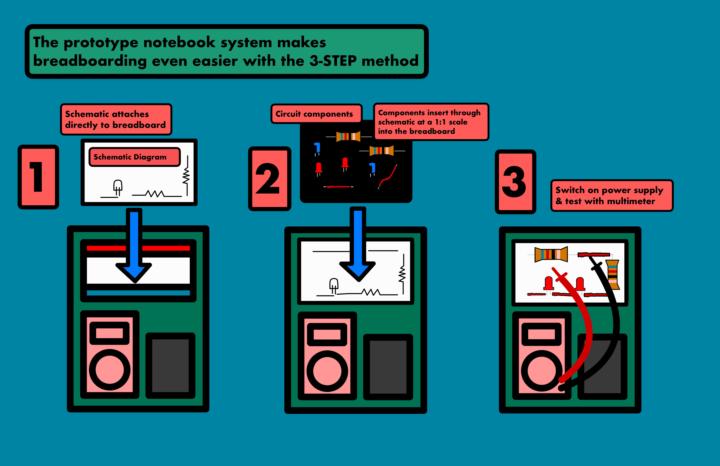Activity
Mon
Wed
Fri
Sun
Oct
Nov
Dec
Jan
Feb
Mar
Apr
May
Jun
Jul
Aug
Sep
What is this?
Less
More
Memberships
Learn Electronics Easily
10 members • Free
3 contributions to Learn Electronics Easily
Unexpected Electronics Encounters
Yesterday I was at the Micro Center (a giant NY computer store) in Yonkers looking for components to cook up some project plans into prototypes when I crossed paths with a former teacher who was looking for LEDs and resistors to do an electronics demonstration at an after-school program in the Bronx. I was struck with surprise that this guy had just been dropped in my lap with a lot of questions about building circuits. And questions that I was uniquely positioned to solve. The employee fielding the questions didn't really have a grasp of what the teacher wanted to do, so I navigated my embarrassment at poking myself into their conversation to try to help him out. I introduced myself by saying, "Yeah so my company actually makes kits that teach this." He described his desire to do a demonstration of how a 9-volt battery drives an LED and eventually blows its rating without resistors. I told him that for the LEDs he had (maybe like 10mm --- HUGE ones) he could probably get away with running them on a battery but eventually they'd pop and become unusable. For most LED's, I said, he'd want to use a 220 ohm or 330 ohm resistor in series to cut the current down to what the LED could handle. It was pretty cool to get to listen to what he wanted to do and what his thought-process was going into doing this demonstration for his students. I am obviously very passionate about introducing students of all ages to building electronics, which I believe to be unnecessarily limited and made unapproachable by many of the learning options out there. There's no reason not to empower everyone to **learn difficult things easily** (my tagline). To hear this retired teacher talk about taking the prototyper-approach to these kids in the Bronx made me feel very confident about the company mission for the prototype notebook and the relevance of our offer in satisfying these pain points. I told him a bit about the prototype notebook and gave him the business info, but I was far more interested helping him out in his specific goals in that moment. I knew he didn't really come to the store to be sold on a product that gold-plated his current aims, even though I did mention how it basically solves all the friction points he was running into as an educator exploring electronics. I basically told him that he should invest in any of the cheap kits on the wall just for how good of a deal they are in the components he'd have access to and the project options. Of course, the issue with these options is their lack of attention in teaching philosophy and limited curriculum content.
Amazon Selling Power-Saver Scam Devices
A few months back, a friend texted me an Amazon link to a product he was thinking about buying, recommended to him by family members who swore it saved them money on their electricity bills for years. I immediately texted back that it seemed fishy but I had to sit down and give it some deeper consideration. The product was a power-saving device you simply plug into the wall outlet, to somehow reduce consumption and cut costs. I looked at the link and found the first red flag: nowhere in the listing did they explain the "somehow". Like how does this work, what is it doing? Why does it work? How does it cut my power usage? I could understand if it were an appliance like a toaster or a microwave that is so well-established and understood that we can treat it like a blackbox and don't really need to consider the insides before purchasing (although they're super dope to take apart and look at). But this is a less common, auxiliary device, and despite their claims, customer reviews and expert tests often report no change in energy consumption (second red flag). When a seller makes all these promises and doesn't actually show how it works, it wreaks of a conman, or our contemporary equivalent: the internet scam. Instead of a Nigerian prince, enter the "professional energy saver", the con-artist scam product that hoodwinks midwest boomers (like my friend's family members) everyday. If it looks like a cheap trick it probably is. But how do these products actually work? And how can they make these promises? Let's see: Could these devices actually be employing advanced, undisclosed technology that truly reduces power consumption (all for $5.00 per unit)? Maybe if I'm new to the concepts/equipment involved I could see how electronics are always getting cheaper and simpler, maybe someone did come up with some awesome device that can passively augment how much power my house uses. It's a compelling prospect, new things are invented everyday that I know nothing about.
Step by Step How to Start Learning Electronics (The Intuitive Way)
If you’re new to electronics or have been struggling with where to start, I’ve put together a step-by-step system to make learning simple and frustration-free. Most people get stuck because they either: ❌ Get overwhelmed with too much theory. ❌ Don’t know which projects to start with. ❌ Struggle to connect theory to real circuits. So I recommend learning it a different way, I refined it over years of learning the wrong way and staying slow and stuck. Until I moved in the prototyping direction. Step 1: Learn the Basics (But Don’t Get Stuck Here) Before you build, you want to learn a few key concepts: 🔹 Voltage, Current, Resistance – The building blocks of electricity. (Learn Ohm’s Law) 🔹 Basic Components – Resistors, capacitors, diodes, transistors, and LEDs. 🔹 How a Continuity in Circuits Works – This will be your playground for experimenting (breadboards, perf-boards, whatever connects). But most people get lost in the weeds here! They read and read and watch infinite tutorials, if you want to do the thing, you just have to do the thing and the learning will come. 👉 Action Step: Get your hands on some parts and wire something up with power. I suggest picking up a basic electronics kit online for like $20-$30 (anything more expensive would likely be gold plating for your current needs). To suit this need for initiation we developed the monthly Prototyping Pack subscription: every month we send members two box sets of 3 circuits with components, schematics, and easy instructions to get building as quickly as possible (as demonstrated in the next step). Step 2: Follow the 3-Step Prototyping Method So you have your components in a big plastic box and you have youtube open with infinite videos of old men soldering and building and talking and talking, what do you actually do now? This is where a lot of people get stuck— so I made a super intuitive system to make circuit-building EASY. 1️⃣ Attach the schematic to the breadboard→ No more messy, hard-to-read wiring!

1-3 of 3
Active 144d ago
Joined Jan 7, 2025
Powered by


